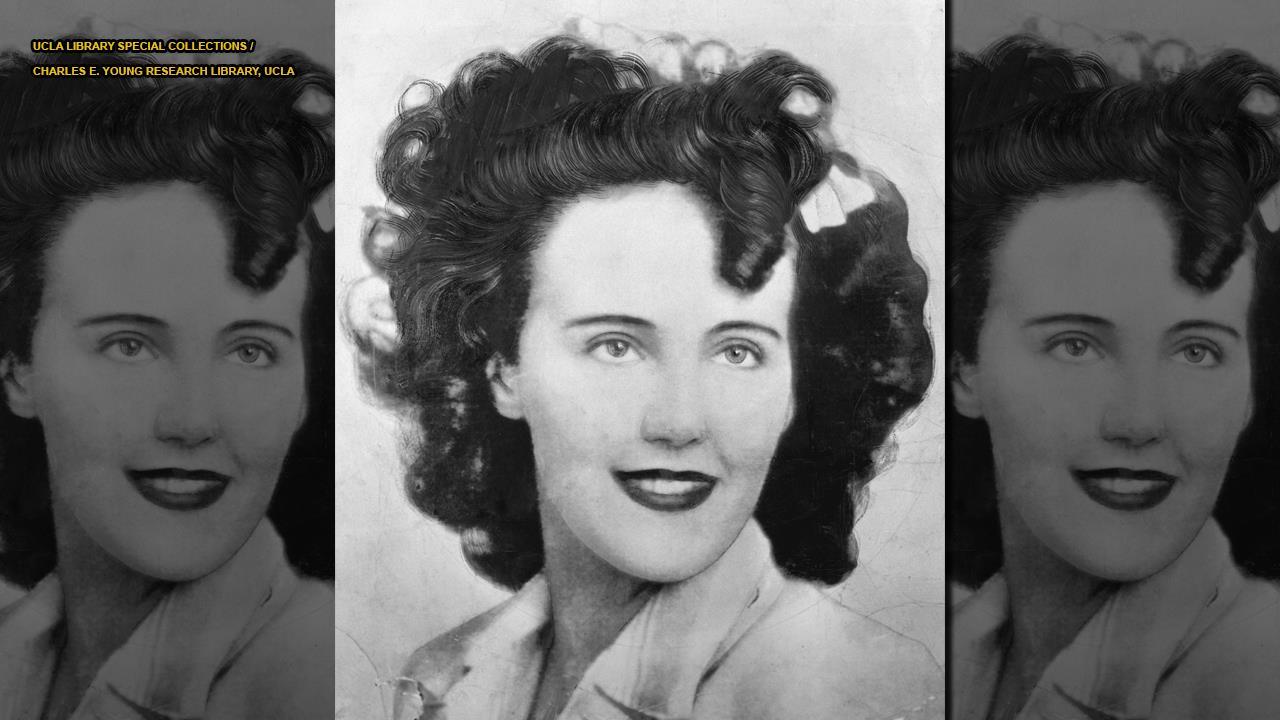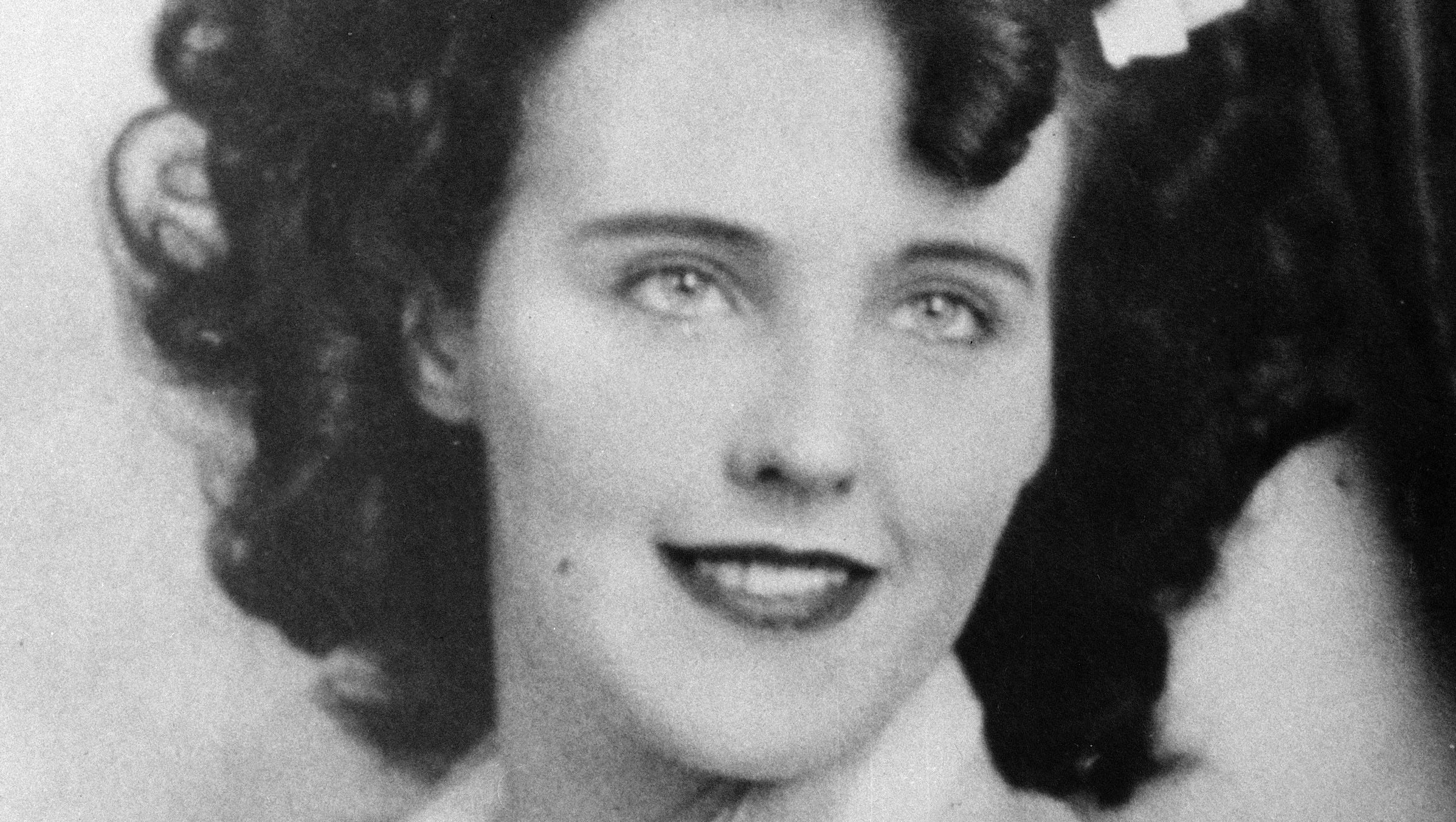Black Dahlia Murder: Unsolved Mystery & Gruesome Details
Could a single glimpse shatter the idyllic facade of a California neighborhood, forever etching its name in the annals of true crime? The Black Dahlia case, with its grotesque discovery and enduring mystery, did just that, transforming Los Angeles and the world of crime reporting forever.
The grim discovery unfolded on January 15, 1947. A woman, taking a leisurely stroll along the sidewalk in the 3800 block of Norton Avenue in Leimert Park, Los Angeles, stumbled upon a sight so horrific it would haunt her and the city for decades to come. What initially appeared to be a discarded department store mannequin lying in the weeds turned out to be something far more sinister: the bisected body of a young woman, later identified as Elizabeth Ann Short, infamously known as "The Black Dahlia." The upper half of her body was separated from the lower half, a chilling testament to the brutality she had endured. This gruesome scene marked the beginning of one of the most sensational and enduring unsolved murder mysteries in American history.
| Category | Information |
|---|---|
| Name | Elizabeth Ann Short |
| Nickname | The Black Dahlia |
| Date of Birth | July 29, 1924 |
| Date of Death | January 15, 1947 |
| Age at Death | 22 |
| Occupation | Aspiring Actress/Waitress |
| Place of Death | Leimert Park, Los Angeles, California |
| Cause of Death | Homicide (Mutilation and Bisecting of the Body) |
| Case Status | Unsolved |
| Reference | FBI - The Black Dahlia |
The Black Dahlia murder case instantly captured the public's imagination, becoming a media sensation that continues to reverberate through popular culture. The Los Angeles Police Department, with the assistance of the FBI, launched a massive investigation into the heinous crime. This involved sifting through numerous leads, interviewing countless individuals, and meticulously examining the crime scene in Leimert Park, Los Angeles, California. Yet, despite their exhaustive efforts, the killer was never apprehended, leaving a cloud of mystery and speculation that persists to this day.
- Unlocking The Secrets Of 5starsstockscom Blue Chip Investments
- Unraveling The Mystique Of Sam Mccall Gh A Journey Through Port Charles
The autopsy conducted on Elizabeth Short's remains revealed the full extent of the horror she had suffered. La County Coroner Frederick Newbarr performed the autopsy on January 16, 1947, just one day after the body was discovered. The medical examiners meticulously documented their findings, which revealed gruesome details that amplified the horror of her murder. Her body had been entirely cut in half at the waist, drained of blood, and subjected to a series of mutilations, including what has been described as a "Dahlia Glasgow smile," a grotesque carving of the mouth. These details, combined with the bisected body, shocked the nation and fueled the media frenzy surrounding the case.
The brutality of the Black Dahlia murder wasn't an isolated incident in the annals of crime history. Much like this case, other murders of the era were often given sensational nicknames by the press. These included the "Red Lipstick Murder" of Jeanne French, the "Red Ribbon Murder" of Olive Laura Hill Gase, and the mysterious "Green Twig Murder" of Louise Springer. Even the killing of Mimi Boombauer in August 1949 became known by a macabre moniker. The tendency to sensationalize crime through catchy nicknames highlights a morbid fascination within the public and the media's role in shaping perceptions of these tragic events.
John Gilmore's 1994 book, "Severed," offered further exploration of the dark circumstances surrounding the case. The book delved into the psychological aspects of the crime and the impact it had on Los Angeles. It also drew comparisons to other similar cases, highlighting the disturbing trend of violence against women in the post-war era. The book "Severed" contributes to the ongoing dialogue and fascination surrounding the Black Dahlia murder, keeping the case alive in the collective consciousness.
- Unraveling The Mystery Behind Janice Nichole Leaked
- Unveiling The Life Of Gabriel Harris And His Wife
The initial discovery of the body was only the beginning. Detectives theorized that the perpetrator had carried the two body parts to the lot one at a time, a detail that fueled speculation about a potential serial killer. Debris found on the upper half of the body suggested that the victim was originally placed face down but had been turned face up for display, indicating a deliberate act of theatrical cruelty. These details, meticulously pieced together by investigators, painted a disturbing picture of the killer's mindset and added to the chilling narrative of the case.
The apartment of Georgette Bauerdorf also became a crime scene. On October 12, 1944, Bauerdorf's maid and a janitor arrived to clean her apartment in West Hollywood only to discover her body face down in her bathtub. While not directly linked to the Black Dahlia case, the Bauerdorf murder shared similarities in its brutality and unsolved nature, further contributing to the atmosphere of fear and uncertainty that gripped Los Angeles during this period. The parallels between these cases underscore the vulnerability of young women and the challenges faced by law enforcement in solving violent crimes.
As presented in some investigative findings, it has been suggested that Elizabeth "Black Dahlia" Short may have inadvertently placed herself in danger by traveling to Chicago, Illinois, in the summer of 1946, while her "former suitor," Dr. George Hodel, was temporarily working as a doctor in Hankow, China, for the UN. This theory, while controversial, suggests that Short's movements and connections may have played a role in her demise. It's important to note that this is just one of many theories surrounding the case, and it lacks conclusive evidence.
Over the years, new evidence has surfaced, yet many believe that the Black Dahlia murder will forever remain unsolved. The gruesome nature of the crime, coupled with the lack of a definitive resolution, has contributed to its enduring infamy. The case serves as a stark reminder of the dark side of human nature and the persistent challenges of bringing perpetrators of violent crimes to justice.
The black dahlia murder has stayed with us for nearly 75 years. It was one murder on one day, and it's still shocking. The abuse unleashed on the victim's corpse, the enduring mystery surrounding her death, and the sensationalized media coverage all contribute to the case's lasting impact on our collective consciousness. The Black Dahlia murder serves as a chilling reminder of the fragility of life and the enduring power of unsolved mysteries.
In the updated "Black Dahlia Avenger" (HarperCollins 2006) paperback edition, several new chapters were added, including one entitled "New Investigation." This suggests that even decades later, dedicated individuals continue to pursue leads and explore new avenues in the hope of finally solving the case. The ongoing investigations and renewed interest in the Black Dahlia murder demonstrate the enduring appeal and the persistent desire to bring closure to this tragic chapter in Los Angeles history.
The "Azamgarh News Girl Death Footage Scandal," while seemingly unrelated, underscores the media's continued fascination with death and the exploitation of tragic events for sensationalism. This modern example echoes the media frenzy surrounding the Black Dahlia case, highlighting the ethical considerations and the potential for harm when reporting on violent crimes. The "Azamgarh News Girl Death Footage Scandal" serves as a reminder of the need for responsible and sensitive journalism when covering such sensitive topics.
The Black Dahlia Autopsy Report provides a chilling glimpse into the physical trauma inflicted upon Elizabeth Short. The report, conducted by La County Coroner Frederick Newbarr, revealed the horrific details of her injuries, including the bisecting of her body and the draining of her blood. These details, while disturbing, are crucial for understanding the brutality of the crime and the potential motives of the killer. The Black Dahlia Autopsy Report remains a key piece of evidence in the ongoing investigation and a testament to the meticulous work of the medical examiners.
According to Grunge, Elizabeth Short was an aspiring actress when she was found murdered on January 15, 1947. The killing, which was later dubbed the Black Dahlia case, caused a media frenzy. This reaffirms the victim's aspirations and dreams, humanizing her and making her death even more tragic. The media frenzy surrounding the case highlights the public's fascination with the lives and deaths of celebrities and aspiring stars.
On the morning of January 15, 1947, a mother taking her child for a walk in a Los Angeles neighborhood stumbled upon a gruesome sight: the body of a young naked woman sliced clean in half. This stark and evocative description captures the horror of the discovery and the impact it had on the local community. The image of a mother and child encountering such a scene underscores the vulnerability of innocence and the lasting trauma inflicted by violent crime.
The 1947 murder of Elizabeth Short, also known as the "Black Dahlia," is one of the oldest cold cases in Los Angeles. Its enduring mystery and gruesome details continue to fascinate and disturb, making it a subject of ongoing investigation and speculation. The Black Dahlia case serves as a reminder of the limitations of law enforcement and the persistent challenges of solving cold cases.
Elizabeth Ann Short, aka "the Black Dahlia" in 1947, was a brutally mutilated female corpse found in Los Angeles. The press nicknamed the victim "the Black Dahlia." Her killer was never found. This summarizes the key facts of the case, highlighting the victim's identity, the nature of the crime, and the lack of a resolution. These simple facts encapsulate the tragedy and the enduring mystery of the Black Dahlia murder.
Elizabeth Short was killed on Jan. 15, 1947, and her case was nicknamed the Black Dahlia murder. This succinct statement provides the essential details of the crime, including the date of the murder and the nickname that has become synonymous with the case. This brief summary serves as a starting point for understanding the Black Dahlia murder and its enduring legacy.
With many rumors and theories surrounding the murder of the Black Dahlia, this haunting case continues to remain as equally unsolved and mysteriously infamous many decades later. The plethora of rumors and theories surrounding the case highlights its complexity and the challenges of separating fact from fiction. The Black Dahlia murder remains a captivating and disturbing enigma, fueling speculation and debate for generations to come.
The bisected body of Elizabeth Short, known as the Black Dahlia, was found at the abandoned lot at Leimert Park. This reinforces the gruesome nature of the crime and its location, further solidifying the image of the Black Dahlia murder in the public's imagination. The abandoned lot at Leimert Park has become an infamous landmark, forever associated with the tragedy of Elizabeth Short.
- Unveiling The Life Of Lola Jade Fielder Civil A Rising Star
- Unraveling The Alton Brown Controversy A Culinary Journey

Black Dahlia murder solved? Shocking new details about aspiring actress

My dad killed Black Dahlia, says retired cop

My dad killed Black Dahlia, says retired cop